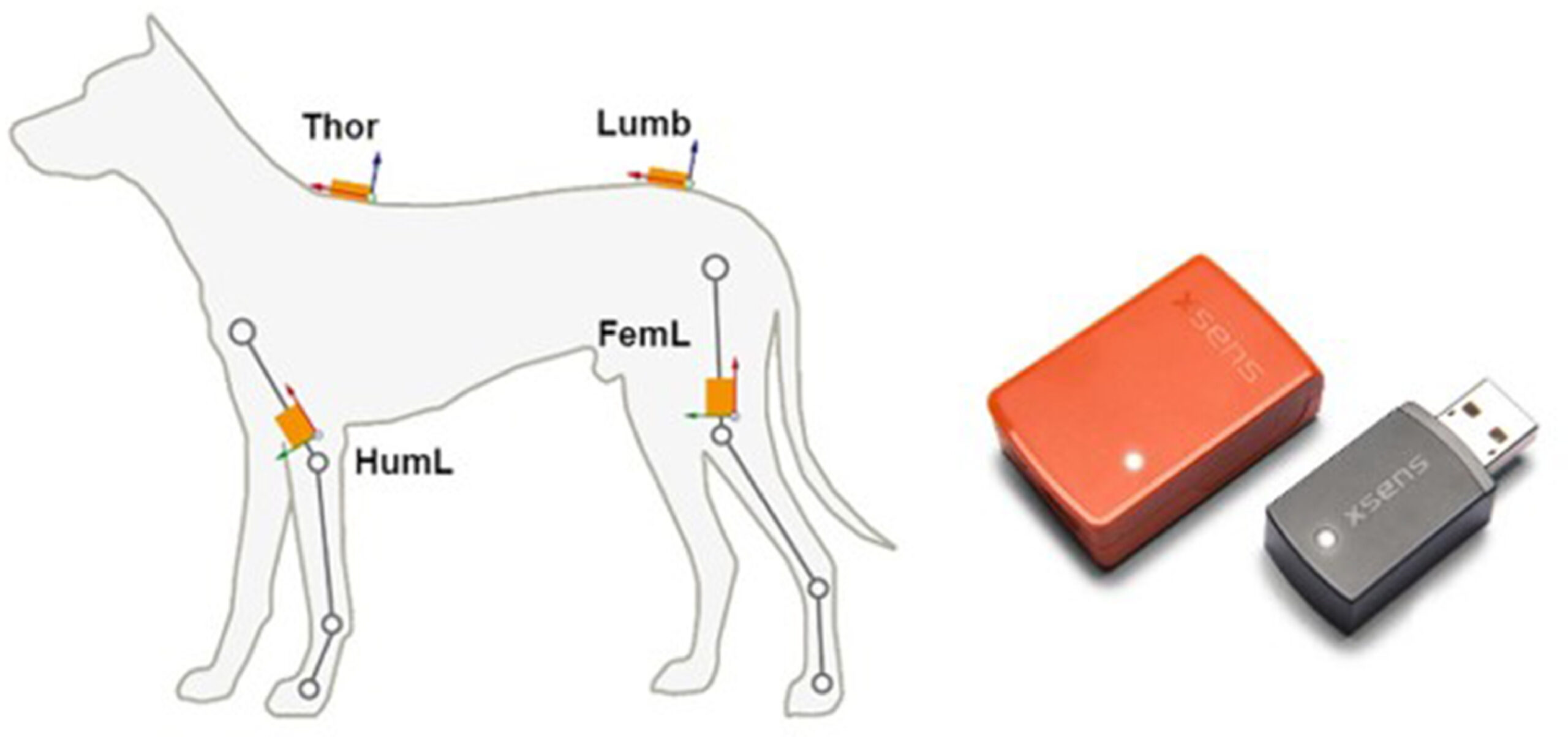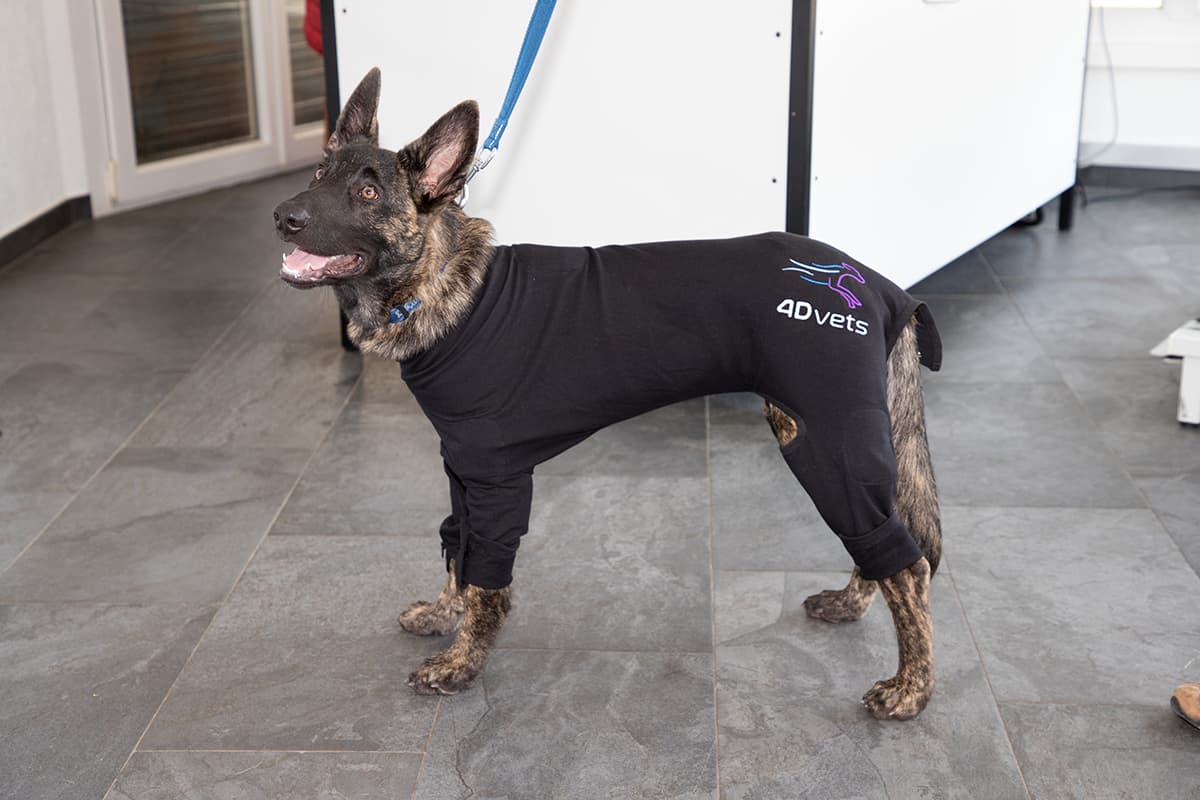Study: Serial kinematic analysis using inertial measurement units in growing dogs at risk of hip dysplasia
Canine gait analysis can detect subtle movement deviations at an early stage, enabling effective treatment.
We are pleased to present a new study recently published in the Journal of Veterinary and Animal Sciences. This research focuses on how precise canine gait analysis helps in early detection of movement disorders and subsequent treatment.
Movement disorders like hip dysplasia (HD) and osteoarthritis are common in canines and significantly reduce their quality of life. These disorders are often diagnosed late, when symptoms are advanced. Early detection could prevent disease progression and improve affected dogs’ quality of life.
Authors of the study:
P. Blättler: Resources, methodology, investigation. M. Altermatt: Writing – review & editing. M. Röhrich: Writing – review & editing. N. Grütter: Writing – review & editing, writing – original draft, methodology, investigation, formal analysis, conceptualisation.
What was done?

In this study, canine gait analysis was conducted using the LupoGait® system, which involves advanced technologies such as inertial measurement units (IMU) to monitor canine movements.
This allowed researchers to identify movement abnormalities before clinical symptoms, such as lameness, were evident.
The hypothesis of the study
The following hypothesis was investigated in the study: Dogs suffering from hip dysplasia (HD) show a higher variance in movement compared to their healthy conspecifics.
This variance manifests itself in the stance and swing phase, in the range of movement, in the extension and flexion of the limbs and in the mechanical symmetries. These differences can be recognised visually by indicators such as dogs running close to the hindquarters, limping or a bow-legged hind leg position.
The research process
Why gait analysis is crucial for dogs.

To test this hypothesis, a 42-month study was launched in early 2019 to investigate the kinematics of puppies from the age of 12 weeks to 15 months.
Three dog breeds that are susceptible to hip dysplasia were selected for the study: 37 Australian Shepherds, 11 Golden Retrievers and 6 Rottweilers.
Between 12 and 28 weeks of age, the pups underwent routine monthly examinations during which their movements were measured using MTw sensors. These sensors are miniaturised inertial measurement units that contain 3D accelerometers, gyroscopes and magnetometers.
After the 28th week, the intervals were extended to every two months.
At the age of 15 months, the final orthopaedic examination was carried out, including an official HD/ED x-ray, which was evaluated by the HD Commission of the Zurich Veterinary Hospital.


Results and significance of the study
How modern gait analyses help to identify movement disorders in dogs at an early stage and treat them effectively.
The results of this comprehensive study confirm the hypothesis that dogs suffering from hip dysplasia (HD) show significant differences in their movement patterns compared to healthy dogs. The analysis showed a higher variance in the stance and swing phase, as well as in the extension and flexion of the limbs. These movement deviations were already recognisable at an early stage of development, long before clinical symptoms such as lameness appeared.
One particularly remarkable result was the ability to identify minimal asymmetries and biomechanical changes in movement. Using the LupoGait® system, veterinarians and researchers were able to collect precise movement data that provided indications of potential orthopaedic problems even before they were clinically visible. The sensitivity of the system made it possible to recognise these changes at an early stage and treat affected dogs accordingly.
The significance of these results lies in the possibility of diagnosing movement disorders such as hip dysplasia and osteoarthritis at a much earlier stage. This enables not only early intervention, but also preventative measures to slow down or even prevent the progression of these diseases. For vets, this is a valuable tool for making informed diagnoses, while dog owners can improve their dogs’ well-being by recognising potential problems at an early stage.
Importance of early diagnosis in canines
Early detection is essential for canines prone to musculoskeletal disorders. Diseases such as hip dysplasia and osteoarthritis often develop slowly and go unnoticed. By monitoring movement patterns regularly, signs of movement disorders can be detected early, enabling prompt therapeutic interventions to slow or prevent disease progression.
Relevance for dog owners and veterinarians
This research is important for anyone interested in improving canine well-being. Canine gait analysis enables dog owners to identify potential issues early, while veterinarians benefit from precise diagnostic tools for developing targeted treatment plans. The technology also offers significant insights in rehabilitation and pain therapy.

